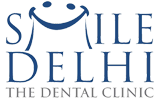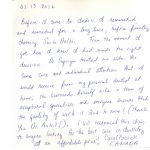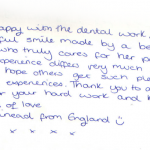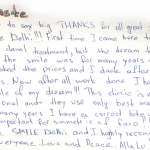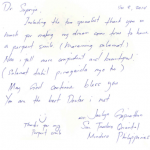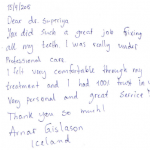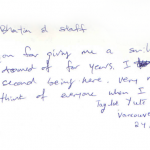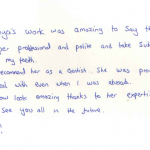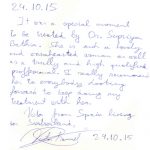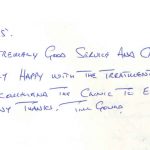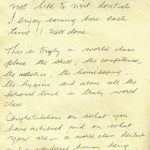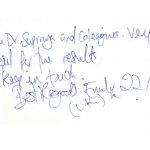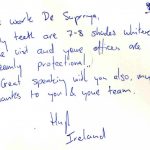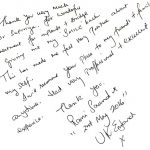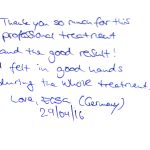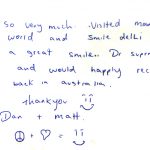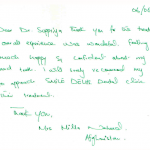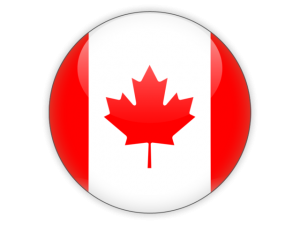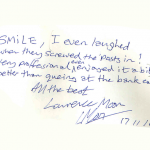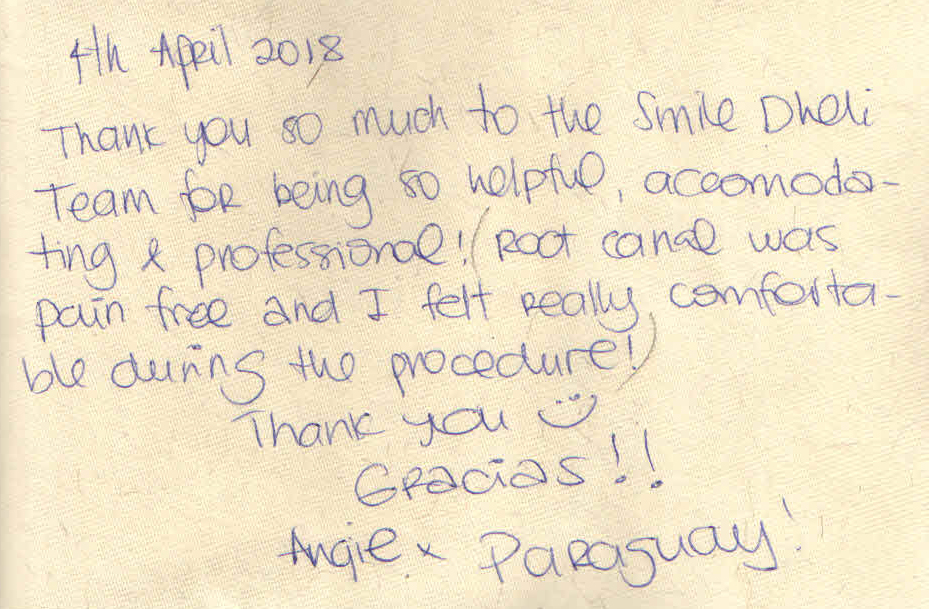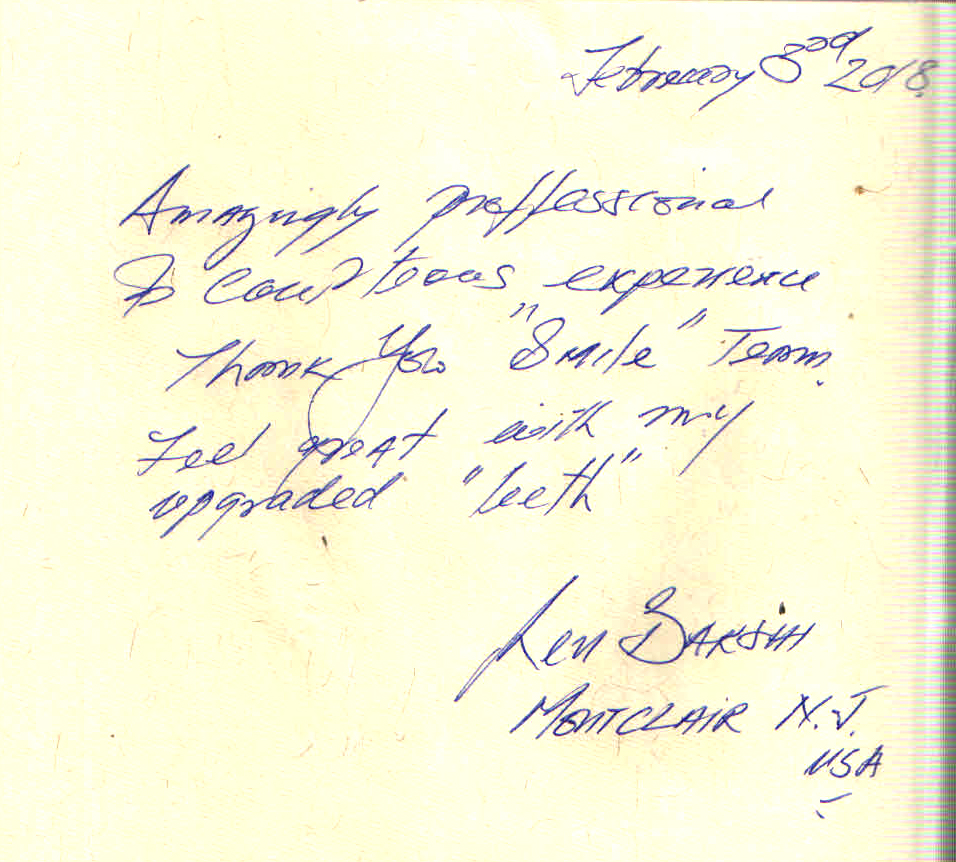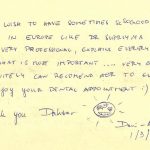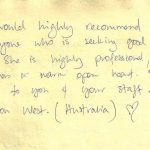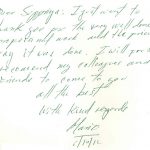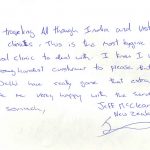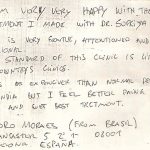Are You Brushing And Flossing Correctly?
There is nothing as beautiful as a shiny white smile. Yet many of us fail to give our teeth the attention they deserve – or are unwittingly brushing them in the wrong way.
Failing to do this properly can lead to a build-up of plaque – which causes tooth decay and can lead to gum disease.
And gum disease has been linked with other health issues including including heart problems, kidney disease, diabetes and even certain types of cancer.
Brushing your teeth is an important part of your dental care routine. Regular, thorough brushing is a very important step in preventing tooth decay and gum disease. Brushing removes the bacteria that promote tooth decay and the plaque that can cause gum disease.
Ideally, you should brush after every meal, because the bacterial attack on teeth begins minutes after eating. At the very least, brush once a day and always before you go to bed. Brushing your teeth isn’t complicated, but there is a right and a wrong way.
Of course, brushing your teeth is only a part of a complete dental care routine. You should also make sure to:
- Clean between teeth daily with floss. Tooth decay-causing bacteria still linger between teeth where toothbrush bristles can’t reach. This helps remove plaque and food particles from between the teeth and under the gum line.
- Eat a balanced diet and limit between-meal snacks.
- Every time you eat or snack, don’t forget to rinse your mouth.
- Visit your dentist regularly for professional cleanings and oral exams.
These basic instructions are being given delibrately by dentist in Delhi.
Proper brushing technique is very easy. Its so easy that you might not feel as if you are cleaning your teeth. Give it time – it’s not easy to relearn brushing after you’ve been using one method your whole life. Switching over to this simple method will take some getting used to, but the results will speak for themselves
Why Proper Brushing Technique is so important?
The harder and faster you brush might feel more effective, but brushing with this motion actually promotes unhealthy build up between your teeth and gums. Letting particles and plaque build up over time can cause serious problems. The proper method makes sure each tooth gets the full advantage of your toothbrush bristles.
Remember: Don’t saw back-and-forth! Use a gentle wiggle motion instead and you’ll save your teeth from damage and sensitivity. Its not the energy but the technique. In Dental clinics
Using the Right Tools
Use a good toothbrush. Choose a toothbrush with soft nylon bristles. This must effectively remove plaque and debris from your teeth, without irritating the gums or eroding tooth enamel like hard-bristled brushes can do when used with sideways action. Medium or soft bristles are best for most people. The toothbrush should also fit comfortably in your hand, and have a head small enough to easily reach all of your teeth, especially the ones at the back. If you have difficulty fitting the toothbrush into your mouth, it is probably too big.
- Brush your teeth with fluoride toothpaste twice a day for about two minutes to help keep your teeth and mouth healthy. Plaque is a film of bacteria that coats your teeth if you don’t brush them properly. It contributes to gum disease and tooth decay. Tooth brushing stops plaque building up. Try to make sure you brush every surface of all your teeth.
- Brush your teeth for about two minutes last thing at night before you go to bed and on one other occasion every day.
- It doesn’t matter whether you use an electric or manual toothbrush. They’re both equally as good, as long as you brush all the surfaces of all your teeth and you use fluoride toothpaste.
- Replace your toothbrush regularly. The bristles will wear out over time, losing their flexibility and effectiveness. You should change toothbrush every three months. Research has found that thousands of microbes call toothbrush bristles and handles “home,” and can cause infections.
- At about three months, bristles become sharp due to friction and can cause your gums to bleed.
- Always rinse your brush after using it, and store it upright and uncovered so that it can dry before your next use. Otherwise bacteria will grow.
HOW TO BRUSH TEETH PROPERLY
- Use a small amount of toothpaste. Squeeze only a pea-sized amount of toothpaste onto your toothbrush. Applying too much toothpaste can cause over-sudsing, tempting you to spit and finish too early. Plus, it increases the risk of you ingesting more fluoride-filled toothpaste, which is very unhealthy.
- Place the head of your toothbrush against your teeth. Set your bristle tips at the gum line at a 45 degree angle. Direct the bristles to where your gums and teeth meet. Use a gentle, circular, massaging motion, up and down. Don’t scrub. Gums that recede visibly are often a result of years of brushing too hard.
- Clean every surface of every tooth. The chewing surface, the cheek side, and the tongue side upper and lower, keeping the bristles angled against the gum line.
- Don’t rush your brush. A thorough brushing should take at least two to three minutes so spend at least three minutes brushing. Try limiting yourself. Brushing just a few teeth at a time, work your way around your mouth in a circle so that you get every tooth, spending about 12 to 15 seconds in each spot.
- Brushing your back teeth. Position the toothbrush so that it’s perpendicular to your lips or so that the bristles resting in top of your bottom teeth. Work the toothbrush in an in-and-out motion, and move from the back of your mouth to the front. Then complete this motion doing rotational movement of the brush in order to eliminate bacteria which have been dislocated from the surface. Repeat on the other side of your mouth. When the bottom teeth are clean, flip the toothbrush over and work on the top back teeth (molars).
- Brush the inner surfaces of your teeth. Tip the toothbrush so that the head of the toothbrush is pointing towards your gum line, and brush each tooth. The most commonly skipped area is the inside of the lower front teeth, so be sure not to forget those.
- Gently brush your tongue. It is also important not to forget to sweep the tongue – which can harbour the bacteria. After you’ve cleaned your teeth, use the bristles of your toothbrush to gently clean your tongue (don’t press too hard or you’ll damage the tissue). This helps freshen your breath and gets rid of bacteria on your tongue.
Now in dental clinics in India, dentists are making it a point to explain the proper brushing technique, as one would not know till its taught.
Flossing
Use dental floss. Flossing your teeth is just as important as brushing, as it removes built up plaque, bacteria and food particles that get trapped between the teeth, which soft floppy toothbrush bristles can’t reach even when used with up/down natural motion. If you don’t floss, you are missing more than one-third of your tooth surface. Plaque is the main cause of gum disease. It is an invisible bacterial film that develops on your teeth every day.
You should always floss before brushing your teeth so that any food or bacteria that come loose during flossing doesn’t remain in your mouth.
- Remember to floss gently. Don’t “snap” the floss between the teeth as this can irritate sensitive gums. Ease it down gently, following the curve of each tooth.
How to use dental floss
Flossing isn’t just for dislodging food wedged between your teeth. Regular flossing may also reduce gum disease and bad breath by removing plaque that forms along the gum line.
Within 24 to 36 hours, plaque hardens into tartar (also called calculus), which can only be removed by professional cleaning. Floss at least once a day, and plaque never gets the chance to harden into tartar.
- Take 12-18 inches (30-45cm) of floss or dental tape, and grasp it so you have a couple of inches of floss taut between your hands.
- Wrap it around your index and middle fingers, leaving about two inches between your hands.
- Slide the floss between your teeth and wrap it into a “C” shape around the base of the tooth and gently under the gum-line. Wipe the tooth from base to tip two or three times.
- Be sure to floss both sides of every tooth. Don’t forget the backs of your last molars. Go to a new section of the floss as it wears and picks up particles.
- Brush your teeth after you floss – it is a more effective method of preventing tooth decay and gum disease.
Dentist in Delhi, after completing the oral prophylaxis explain the proper flossing technique to the patients. In fact the awareness about flossing is increasing in our country as the dentists in the dental clinics in India are making it a point to explain the technique of flossing to each and every patients. In some dental clinics in Delhi, the toothbrushes and flosses are available for sale in the clinic itself, for patient convenience.
Flossing Problems and Solutions
Gums sometimes bleed when you first begin to floss. Bleeding usually stops after a few days. If bleeding does not stop, see your dentist. Floss can shred if you snag it on an old filling or on the ragged edge of a tooth.
The two points regarding flossing that dentist in Delhi, make sure to convey to their patients is that flossing should be done gently and if some joint between two teeth is really tight, no point forcing the floss through that joint.
Always remember
Posted By – Dr. Shriya
